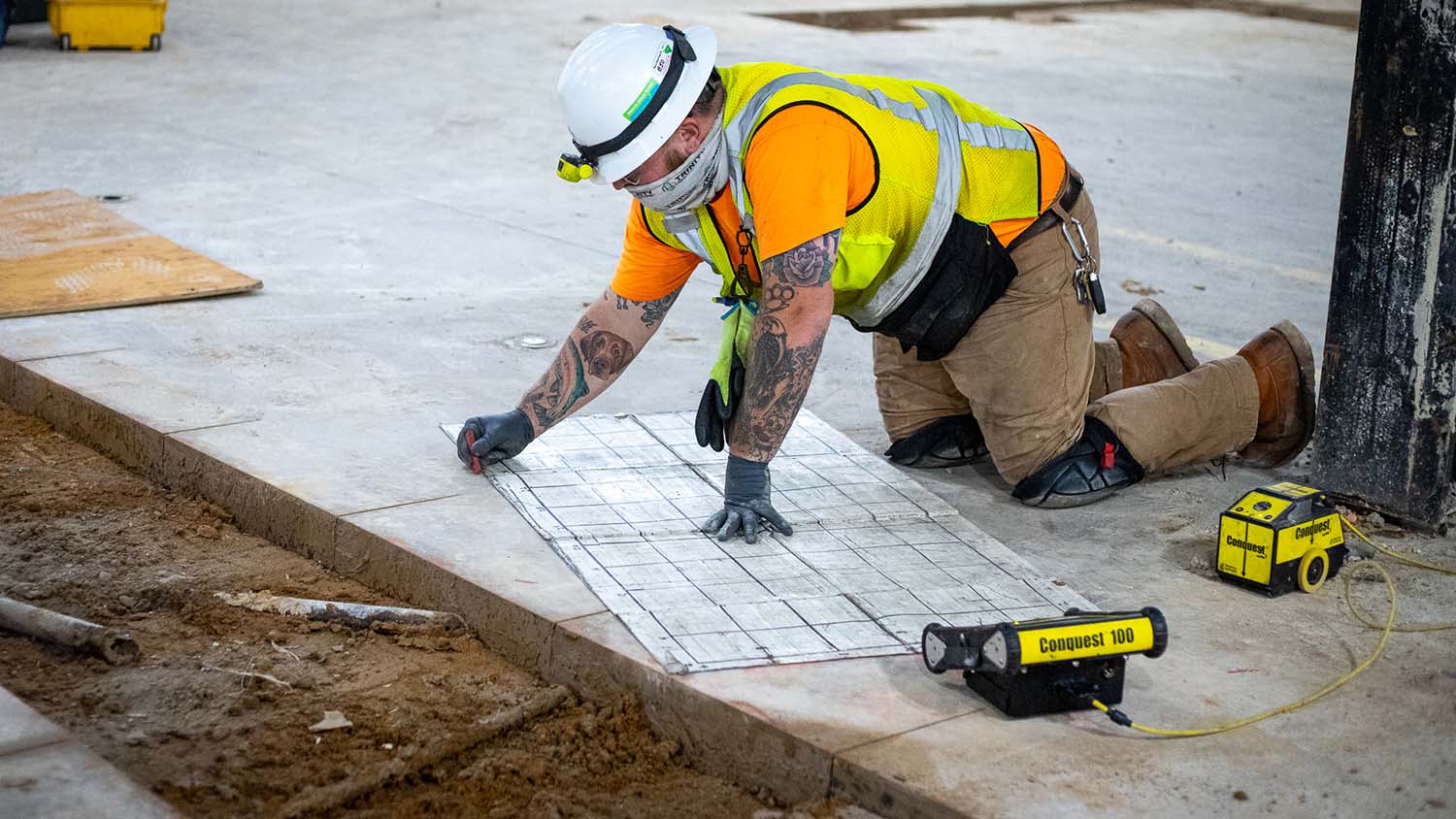Harness the Strategic Edge of Concrete Scanning for Unparalleled Task Success and Quality Control
In the world of modern construction and infrastructure development, the use of concrete scanning innovation has actually arised as an essential tool for ensuring project success and preserving top quality requirements. The true power of concrete scanning lies not just in its ability to improve job results yet also in its capacity to revolutionize typical techniques, setting a brand-new benchmark for accuracy and effectiveness in the construction sector.
The Importance of Concrete Scanning
Concrete scanning is a necessary step in construction projects to ensure the safety and security and honesty of structures. By making use of various scanning modern technologies such as Ground Penetrating Radar (GPR) and electromagnetic induction, building teams can non-destructively examine the subsurface of concrete frameworks to determine potential dangers like rebar, channels, or post-tension cords. This info is crucial for task engineers, service providers, and supervisors to make enlightened decisions and avoid costly errors during the construction procedure.
Among the primary reasons concrete scanning is so vital is its ability to stop crashes and injuries on the building and construction site. Accidentally cutting with an online electrical avenue or destructive post-tension wires can have catastrophic effects, not just in regards to safety and security however also in terms of task hold-ups and monetary implications. By carrying out extensive concrete scanning prior to any type of drilling, reducing, or coring activities, building and construction teams can minimize dangers and develop a safer working environment for everybody involved.
In enhancement to safety considerations, concrete scanning likewise plays a vital duty in guaranteeing the long-lasting toughness and quality of the structure. By finding any type of issues or anomalies hidden under the surface, such as voids or delamination, very early intervention can be applied to address these problems prior to they rise right into more considerable troubles. Ultimately, investing in concrete scanning is a positive measure that can conserve time, money, and sources in the future, while likewise supporting the highest possible standards of construction quality.
Advanced Innovation for Specific Results

Additionally, 3D scanning innovations provide a thorough view of the subsurface setting by creating in-depth digital designs. These versions give important insights into the structural integrity of concrete components and aid in identifying possible weak points prior to they rise right into significant concerns. By including these innovative innovations right into concrete scanning practices, building and construction groups can enhance operations, minimize project hold-ups, and make certain the total quality and success of the project. The precision and performance supplied by these tools contribute substantially to the job's success by facilitating notified decision-making and developing quality control steps.
Enhancing Job Effectiveness and Timelines

Furthermore, concrete scanning allows groups to identify possible threats and structural weak points early on, enabling punctual removal and protecting against crashes that can derail task timelines. The real-time data supplied by scanning tools assists in informed decision-making, resulting in smoother coordination amongst different trades and stakeholders. This improved partnership lessens disputes, enhances efficiency, and ultimately accelerates project shipment.
In addition, by proactively resolving issues with concrete scanning, building and construction teams can abide by timetables more properly, reduce downtime, and optimize resource allocation. The capability to find hidden barriers and validate architectural honesty successfully adds to general task efficiency and timelines, ensuring effective outcomes and client fulfillment.
Ensuring Security and Danger Reduction

Threat reduction techniques can be boosted with the comprehensive details offered by concrete scanning, making it possible for task groups to make enlightened decisions that lower the likelihood of unanticipated events. Furthermore, by accurately drawing up subsurface conditions, service providers can stay clear of costly rework, delays, and damage to existing frameworks, additionally adding to general task security and success. Carrying out concrete scanning as a regular technique not just guarantees a safer job setting yet also instills confidence in stakeholders pertaining to the job's dedication to quality and danger administration.
Quality Control Via Concrete Scanning
Concrete scanning plays a pivotal function in supporting quality control requirements within construction tasks. By making use of sophisticated scanning innovations such as Ground Penetrating Radar (GPR) and Concrete X-ray, task supervisors and engineers can make certain the integrity and high quality of concrete frameworks. Via concrete scanning, prospective issues, such as gaps, fractures, or reinforcing bar blockage, can be identified non-destructively, permitting prompt treatments to keep the architectural integrity of the job.
Quality control through concrete scanning not only helps in recognizing existing concerns yet also enables proactive procedures to stop future issues that could compromise the security and durability of the structure. By performing comprehensive scans at crucial stages of building and construction, groups can verify the accuracy of structural strategies, verify the placement of vital elements, and address any kind of deviations quickly. This positive strategy minimizes rework, decreases costly delays, and inevitably results in the distribution of high-quality, resilient structures that fulfill or go beyond sector standards.
Verdict
In conclusion, concrete scanning plays an essential duty in making sure project success, safety and security, top quality, and effectiveness guarantee. The strategic side provided by concrete scanning allows for positive risk reduction More about the author and improves total task management.
In the realm of modern-day construction and facilities growth, the application of concrete scanning technology has emerged as a critical tool for making sure task success and maintaining quality requirements. By integrating these advanced modern technologies right into concrete scanning techniques, building and construction groups can simplify process, decrease project delays, and make certain the overall high quality and success of the job.Provided the important nature of job performance and timelines in building and construction website here monitoring, the emphasis now moves in the direction of ensuring safety and mitigating threats within the job environment.Concrete scanning plays an essential function in upholding top quality assurance requirements within building jobs. By utilizing sophisticated scanning technologies such as Ground Permeating Radar (GPR) and Concrete X-ray, task supervisors and engineers can make certain the stability and top quality of concrete structures.